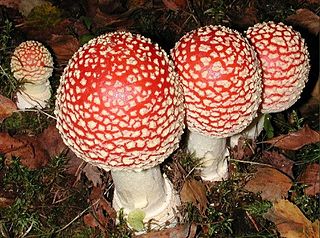
A mycorrhiza is a symbiotic association between a fungus and a plant. The term mycorrhiza refers to the role of the fungus in the plant's rhizosphere, the plant root system and its surroundings. Mycorrhizae play important roles in plant nutrition, soil biology, and soil chemistry.
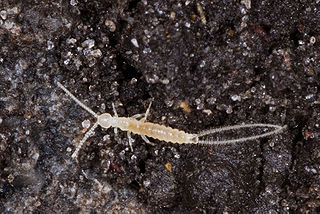
The order Diplura is one of three orders of non-insect hexapods within the class Entognatha. The name "diplura", or "two tails", refers to the characteristic pair of caudal appendages or filaments at the terminal end of the body.
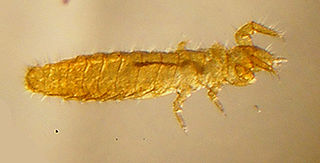
The Protura, or proturans, and sometimes nicknamed coneheads, are very small, soil-dwelling animals, so inconspicuous they were not noticed until the 20th century. The Protura constitute an order of hexapods that were previously regarded as insects, and sometimes treated as a class in their own right.
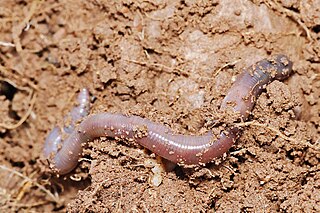
Detritivores are heterotrophs that obtain nutrients by consuming detritus. There are many kinds of invertebrates, vertebrates, and plants that carry out coprophagy. By doing so, all these detritivores contribute to decomposition and the nutrient cycles. Detritivores should be distinguished from other decomposers, such as many species of bacteria, fungi and protists, which are unable to ingest discrete lumps of matter. Instead, these other decomposers live by absorbing and metabolizing on a molecular scale. The terms detritivore and decomposer are often used interchangeably, but they describe different organisms. Detritivores are usually arthropods and help in the process of remineralization. Detritivores perform the first stage of remineralization, by fragmenting the dead plant matter, allowing decomposers to perform the second stage of remineralization.

An arbuscular mycorrhiza (AM) is a type of mycorrhiza in which the symbiont fungus penetrates the cortical cells of the roots of a vascular plant forming arbuscules. Arbuscular mycorrhiza is a type of endomycorrhiza along with ericoid mycorrhiza and orchid mycorrhiza. They are characterized by the formation of unique tree-like structures, the arbuscules. In addition, globular storage structures called vesicles are often encountered.

The soil food web is the community of organisms living all or part of their lives in the soil. It describes a complex living system in the soil and how it interacts with the environment, plants, and animals.

In biology, detritus is organic matter made up of the decomposing remains of organisms and plants, and also of feces. Detritus usually hosts communities of microorganisms that colonize and decompose (remineralise) it. Such microorganisms may be decomposers, detritivores, or coprophages.
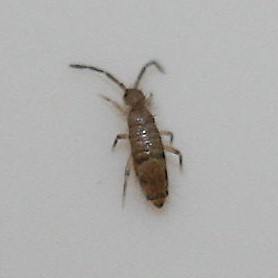
Entomobryidae, sometimes called "slender springtails", is a family of springtails characterised by having an enlarged fourth abdominal segment and a well-developed furcula. Species in this family may be heavily scaled and can be very colourful. The scale-less Entomobryidae are commonly caught in pitfall traps around the planet, and also occur in canopy faunas high up in trees. There are more than 1700 described species in Entomobryidae.

Soil biology is the study of microbial and faunal activity and ecology in soil. Soil life, soil biota, soil fauna, or edaphon is a collective term that encompasses all organisms that spend a significant portion of their life cycle within a soil profile, or at the soil-litter interface. These organisms include earthworms, nematodes, protozoa, fungi, bacteria, different arthropods, as well as some reptiles, and species of burrowing mammals like gophers, moles and prairie dogs. Soil biology plays a vital role in determining many soil characteristics. The decomposition of organic matter by soil organisms has an immense influence on soil fertility, plant growth, soil structure, and carbon storage. As a relatively new science, much remains unknown about soil biology and its effect on soil ecosystems.

The furcula, or furca is a forked, tail-like appendage. It is present in most species of springtails, and in them it is attached ventrally to the fourth abdominal segment. The organ most often is present in species of Collembola that lives in the upper soil layers where it is used for jumping to avoid predators. While at rest, it is retracted under the abdomen and held there by a structure variously called the retinaculum or hamula, which in turn is located beneath the third abdominal segment. When the furcula escapes from retinaculum, it swings downwards and hits the substrate, propelling the springtail into the air. The animal does not use this mechanism for ordinary locomotion, but only for escaping from predators or severe stress.

Soil respiration refers to the production of carbon dioxide when soil organisms respire. This includes respiration of plant roots, the rhizosphere, microbes and fauna.
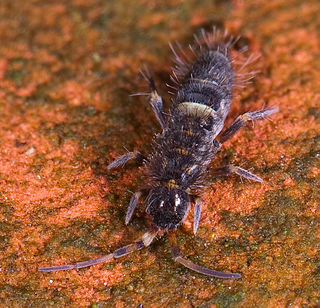
Springtails form the largest of the three lineages of modern hexapods that are no longer considered insects. Although the three orders are sometimes grouped together in a class called Entognatha because they have internal mouthparts, they do not appear to be any more closely related to one another than they are to all insects, which have external mouthparts.
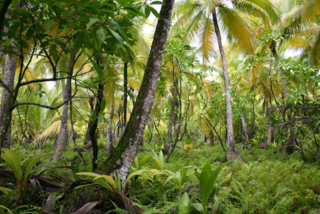
Plant ecology is a subdiscipline of ecology that studies the distribution and abundance of plants, the effects of environmental factors upon the abundance of plants, and the interactions among plants and between plants and other organisms. Examples of these are the distribution of temperate deciduous forests in North America, the effects of drought or flooding upon plant survival, and competition among desert plants for water, or effects of herds of grazing animals upon the composition of grasslands.
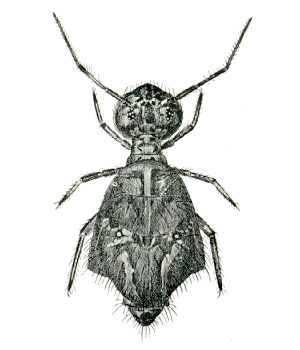
Sminthuridae, not to be confounded with: Sminthurididae, is a family of springtails of the order Symphypleona. Sminthurids are commonly referred to as globular springtails.

Orchesella cincta is a species of springtail present in North America and Europe. They average 4 millimetres (0.16 in) in length, which is extremely large as most springtails don’t grow past 1 millimetre. The specific name cincta means "belted" and refers to the distinctive colouration of the third abdominal segment.
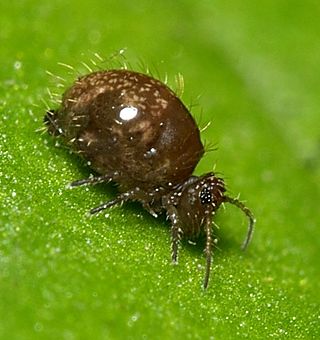
Allacma fusca is a species of springtail. This species is endemic to western areas of Continental Europe and the British Isles, where it lives in the surface layers of the soil in moist habitats such as among leaf litter.

Suillus collinitus is a pored mushroom of the genus Suillus in the family Suillaceae. It is an edible mushroom found in European pine forests. The mushroom has a reddish to chestnut-brown cap that reaches up to 11 cm (4.3 in) in diameter, and a yellow stem measuring up to 7 cm (2.8 in) tall by 1 to 2 cm thick. On the underside of the cap are small angular pores, initially bright yellow before turning greenish-brown with age. A characteristic feature that helps to distinguish it from similar Suillus species, such as S. granulatus, is the pinkish mycelia at the base of the stem.
Soil microbiology is the study of microorganisms in soil, their functions, and how they affect soil properties. It is believed that between two and four billion years ago, the first ancient bacteria and microorganisms came about on Earth's oceans. These bacteria could fix nitrogen, in time multiplied, and as a result released oxygen into the atmosphere. This led to more advanced microorganisms, which are important because they affect soil structure and fertility. Soil microorganisms can be classified as bacteria, actinomycetes, fungi, algae and protozoa. Each of these groups has characteristics that define them and their functions in soil.
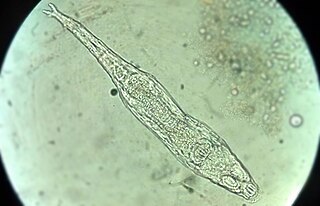
Soil mesofauna are invertebrates between 0.1mm and 2mm in size, which live in the soil or in a leaf litter layer on the soil surface. Members of this group include nematodes, mites, springtails (collembola), proturans, pauropods, rotifers, earthworms, tardigrades, small spiders, pseudoscorpions, opiliones (harvestmen), enchytraeidae such as potworms, insect larvae, small isopods and myriapods. They play an important part in the carbon cycle and are likely to be adversely affected by climate change.

The root microbiome is the dynamic community of microorganisms associated with plant roots. Because they are rich in a variety of carbon compounds, plant roots provide unique environments for a diverse assemblage of soil microorganisms, including bacteria, fungi, and archaea. The microbial communities inside the root and in the rhizosphere are distinct from each other, and from the microbial communities of bulk soil, although there is some overlap in species composition.


















